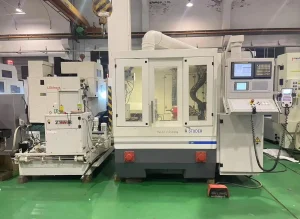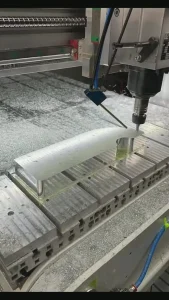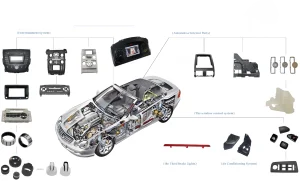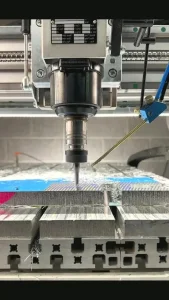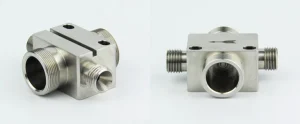A modern airliner has millions of parts, and many of its key components, from engine turbine blades to landing gear structures, have been carved by precision CNC machines. In aerospace, a field with almost demanding safety and performance requirements, CNC machining services have long transcended simple “metal cutting” and have become the cornerstone of precision manufacturing that supports human flight to the blue sky.
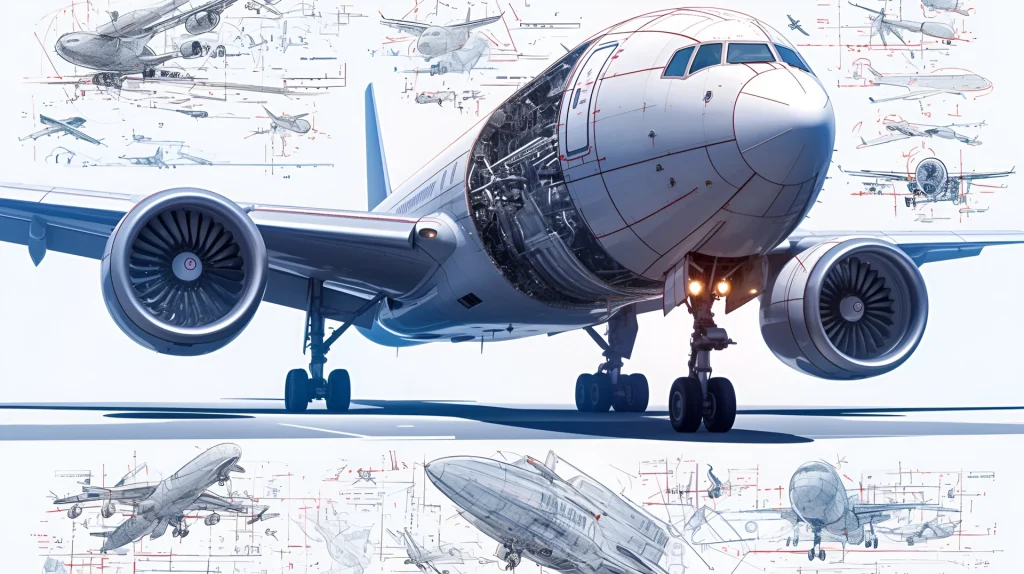
Challenge: The “Triple Door” of Materials, Precision, and Certification
Material exclusion zones: Aerospace components often use titanium alloys (such as Ti-6Al-4V), superalloys (such as Inconel 718), high-strength aluminum alloys (such as 7075), and composites. These materials are either amazing strength or excellent heat resistance, but they are also known for being “difficult to process”. Titanium alloy has poor thermal conductivity, and heat is easily concentrated on the tool tip during processing, resulting in rapid wear and even chipping; Superalloys have both high strength, high hardness and work hardening tendencies, and tool loss can be called a “nightmare”. CNC machining service providers must master the “code” of cutting parameters for specific materials – precise combination of rotational speed, feed, and depth of cutting, combined with specialized tool coatings (e.g., diamond, nitrogen, aluminum, titanium) and efficient cooling solutions (e.g., high-pressure coolant, low-temperature cold air) to gnaw on these hard bones.
Accuracy: The life and death line at the micron level: The deviation of the profile accuracy of the aero engine turbine blade may be only a few microns (μm), which is directly related to aerodynamic efficiency and fuel economy. The compatibility tolerance of the actuator of the flight control system is related to the stability and safety of the flight. CNC machining in this field often needs to meet or exceed IT6 tolerances (micron level) and ensure the contour accuracy of complex surfaces (e.g., blades, receivers). This not only relies on the top five-axis linkage, turning-milling composite machining center, but also relies on real-time compensation technologies such as online measurement and laser tracker, as well as the environmental protection of the constant temperature workshop. Surface roughness is also critical, such as hydraulic valve body channels often need to reach Ra 0.4 μm or less to reduce fluid resistance and wear.
Certification: AS9100 is the starting point, not the end: Entering the aerospace supply chain requires crossing stringent industry certification thresholds. AS9100 (Aerospace Quality Management System) is the most basic requirement, which is based on ISO 9001 but enhances risk management, traceability, configuration management and special process controls (e.g. heat treatment, non-destructive testing). CNC service providers are also required to meet NADCAP (National Aerospace and Defense Contractor Credit Program) certifications for special processes (e.g., material testing, chemical processing). Every aerospace part must have a complete “digital gene” – from raw material batches, processing parameters, quality inspection reports to operator information, to achieve full process traceability (Lot Traceability). A small process omission or data deviation can lead to costly quality retrospectives or even airworthiness risks.
Value: How can CNC service providers become “precision partners” in aerospace?
Technical barrier builders: Faced with complex thin-walled structures (such as aircraft skeleton parts), special-shaped curved surfaces (such as engine blades), and deep cavity machining (such as landing gear components), top CNC service providers rely on the cutting ability of five-axis linkage machining centers to “space arbitrary attitude”, the efficiency of “multiple processes in one clamping” of turning-milling composite machining, and advanced processes such as high-precision mirror milling to transform design drawings into reality. Simulation software, such as Vericut, can predict and avoid potential collisions, vibrations, or deformation risks before physical machining.
Quality Guardian Chain: Quality control runs throughout, from rigorous verification of First Article Inspection (FAI), to real-time monitoring of Process Statistical Control (SPC), to precise reporting of the final coordinate measuring machine (CMM). Aerospace parts often require 100% inspection of critical dimensions, supplemented by non-destructive testing methods such as fluorescence penetration (FPI) and X-ray to ensure that there are no internal defects. The service provider’s quality system is like a precision instrument, ensuring the output of zero defect products.
Efficiency and Cost Optimizer: In the aerospace long-cycle, low-batch, high-value manufacturing ecosystem, CNC service providers reduce production cycles and reduce manufacturing costs while ensuring quality through process optimization (such as reducing the number of clamps), tool life management, efficient programming (CAM), and flexible production units (FMS). For example, high-speed machining (HSM) strategies can be used to achieve high feeds and small depths of cut on specific materials, significantly improving efficiency.
Epilogue
In the aerospace sector, CNC machining services have long transcended the scope of “incoming material processing”. It is a deep fusion of materials science, precision manufacturing, digital technology and stringent quality management. Every precise cut is casting solid and reliable wings for mankind’s dream of exploring the blue sky. Choosing a CNC partner who is well-versed in industry standards, has top-notch technical strength, and has a perfect quality system is key to ensuring that every aviation part can operate safely and reliably at an altitude of 10,000 meters. Under the sky, precision is life, and CNC machining is the precision guardian of this lifeline – every micron of precision carries human commitment to the sky.

